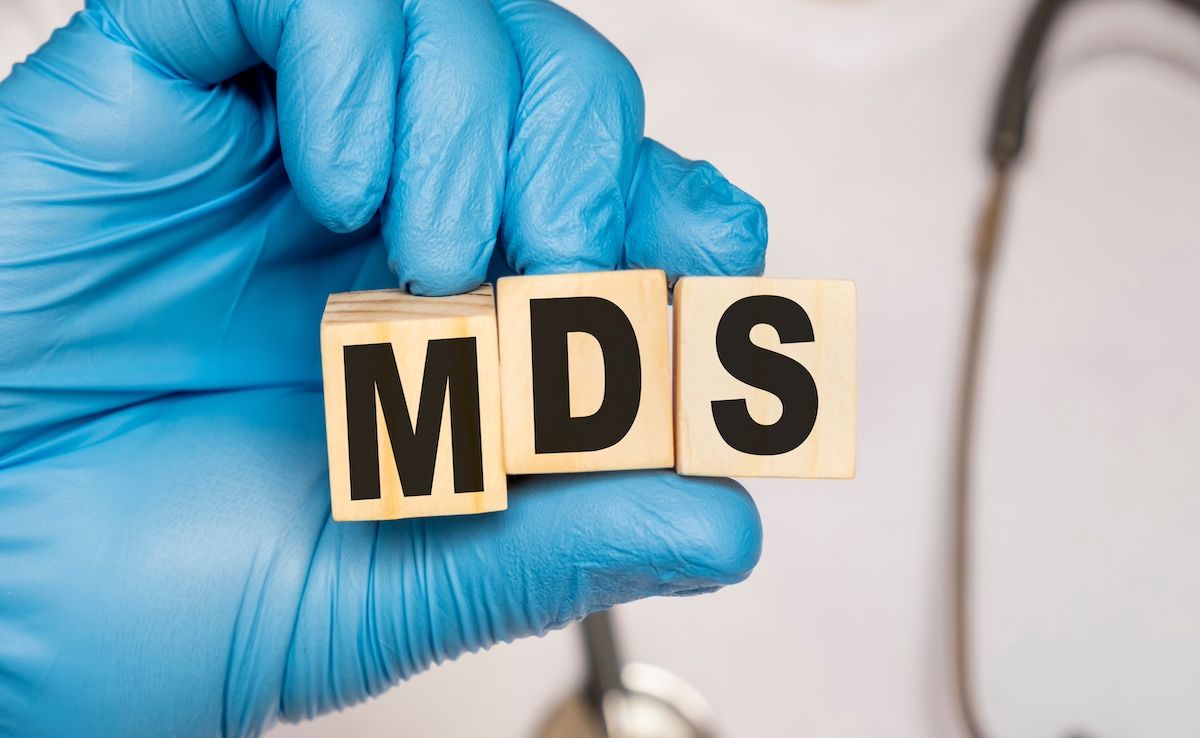News
Article
Report: ESAs Largely Ineffective in Lower-Risk MDS
Author(s):
Only about a quarter of patients who have myelodysplastic syndrome (MDS) experienced hematologic improvement with erythropoiesis-stimulating agents (ESAs).
Patients with lower-risk myelodysplastic syndromes (LR-MDS) are unlikely to benefit from treatment with erythropoiesis-stimulating agents (ESAs), according to a new report.
The study, which was published in the journal Clinical Lymphoma, Myeloma, and Leukemia, found patients had low rates of clinical improvement on ESAs, but high rates of health care resource utilization.1
The study authors explained that MDS-related anemia is caused in part by ineffective erythropoiesis. Transfusion support can help, they explained, but can also lead to negative adverse effects and lower quality of life. In some patients, ESA treatment is effective and associated with a low or no red blood cell transfusion requirement. However, they added that response rates to the therapy vary, and many patients experience a loss of benefit over time, “possibly due to the loss of sensitivity in the erythroid progenitors that bind to the ESAs.”
Several studies have been undertaken with the goal of identifying which patients are most likely to benefit from ESAs, but the present study authors said real-world evidence is limited, as are data about treatment patterns, long-term outcomes, and health care resource utilization.
Hematologic improvement is often a lofty goal for patients who have MDS, with just a quarter reporting this outcome following treatment with erythropoiesis-stimulating agents | Image Credit: Sviatlana-stock.adobe.com

In the new study, they retroactively analyzed 142 patients with LR-MDS prescribed ESAs between 2016 and 2019. The authors examined patient characteristics, treatment patterns, clinical outcomes, and health care utilization for a median follow-up of 17 months.
The cohort of patients had a median age of 79 years at initiation of ESA treatment, 54% were male patients, and just over half were either overweight or obese. Ninety-six percent of participants were White. Most patients (57%) were started on darbepoetin alfa (Aranesp; Amgen) and the remaining patients were started with epoetin alfa (Epogen; Amgen). At baseline, 34% of patients were transfusion dependent.
The overall response to ESA therapy was poor, the investigators found. Only 26% of participants achieved the end point of hematologic improvement-erythroid (HI-E). Six percent of patients progressed to high-risk MDS, and 4% progressed to acute myeloid leukemia. Of those who were transfusion dependent at baseline, half remained dependent during follow-up. The authors also evaluated a subgroup of patients who discontinued ESAs, but then were retreated with them. In that subgroup, 65% experienced primary ESA failure.
Meanwhile, hospitalization was common. Sixty-four percent of patients were admitted to the hospital at least once, for a median length of stay of 9.5 days, the authors said. Forty-four percent of patients had at least 1 emergency department visit.
“In this study of patients with LR-MDS in the US who were treated with ESAs, clinical outcomes were generally poor, and there was a substantial burden on both the health systems and individual patients,” the authors wrote.
They conceded that their study population was small, older than other published studies, and lacked significant racial and ethnic diversity. However, they added that their research was bolstered by the availability of structured electronic health record data, which allowed them to confirm risk status and ESA and red blood cell treatments.
The investigators concluded that their evidence suggests ESA failure is very common in patients with LR-MDS. They noted that newer options are becoming available, and that there is a need to better understand when alternatives to ESAs should be considered. For instance, the FDA has approved luspatercept (Rebloyzl; Bristol Myers Squibb) for certain patients with MDS-related anemia. A study published earlier this year found the therapy outperformed epoetin alfa in terms of hematological improvement and transfusion independence among ESA-naive patients with lower-risk MDS.2
References
1. Garcia-Manero G, Matsuno RK, McBride A, et al. Clinical outcomes and healthcare resource utilization for patients with lower-risk myelodysplastic syndromes treated with erythropoiesis-stimulating agents. Clin Lymphoma Myeloma Leuk. Published online May 7, 2024. doi:10.1016/j.clml.2024.05.007
2. Porta MGD, Garcia-Manero G, Santini V, et al. Luspatercept versus epoetin alfa in erythropoiesis-stimulating agent-naive, transfusion-dependent, lower-risk myelodysplastic syndromes (COMMANDS): primary analysis of a phase 3, open-label, randomised, controlled trial. Lancet Haematol. Published online July 19, 2024. doi:10.1016/S2352-3026(24)00203-5
Newsletter
Stay ahead of policy, cost, and value—subscribe to AJMC for expert insights at the intersection of clinical care and health economics.





